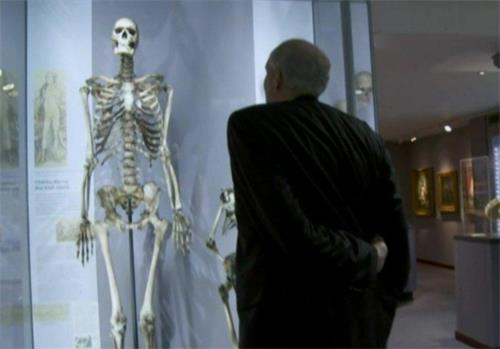
In recent years, scientists have made groundbreaking genetic discoveries that unravel a millennium-old mystery—the occurrence of "giant syndrome" in Northern Ireland. This condition, which has led to abnormal height growth in certain families, can be traced back to a genetic mutation that emerged 1,500 years ago. Recent research not only sheds light on this historical enigma but also provides new insights for modern genetics, offering potential methods for predicting and treating related hereditary disorders.
Byrne, who claimed to be over 8 feet (approximately 2.43 meters) tall, became widely known for publicly exhibiting his extraordinary stature in London. However, modern skeletal analysis has confirmed that his actual height was 7 feet 11 inches (approximately 2.41 meters). Byrne passed away at the age of 22 due to excessive drinking, but his body was preserved by surgeon John Hunter and remains on display at the Hunterian Museum in London.
Genetic analysis of Byrne and other historical giants has revealed a shared genetic mutation among these individuals. This mutation is linked to the development of pituitary tumors, which cause excessive growth, leading to conditions such as gigantism or acromegaly. Symptoms of acromegaly include thickened skin, abnormal enlargement of the hands, feet, and facial features, as well as enlargement of internal organs.
Further research has traced the origins of this genetic mutation to approximately 1,500 years ago. DNA analysis of historical remains suggests that the mutation originated from a common ancestor who passed it down through generations. Today, an estimated 200 to 300 individuals still carry this genetic variant, with some families having inherited it for multiple generations. This discovery provides crucial insights into understanding and potentially treating related disorders.
Notably, this genetic mutation is not only linked to historical figures like Charles Byrne but also affects some modern families in Northern Ireland. Studies have identified members of four families in the region who exhibit symptoms of gigantism and whose DNA matches the AIP mutation. By analyzing these present-day cases, scientists have further confirmed the hereditary nature of this genetic variant.
Professor Marta Korbonits from London Medical School emphasizes that while this theory may have initially seemed far-fetched, accumulating data and continued research have solidified its validity. She notes that this study not only maps the historical trajectory of the genetic mutation but also opens new avenues for contemporary medical research.
Professor Mark Thomas from University College London adds that advancements in modern genetics now allow scientists to identify and predict the risks associated with genetic mutations. In some cases, intervention can occur even before symptoms develop. Researchers hope that this study will enable early treatment for individuals carrying the AIP gene mutation, potentially preventing gigantism and other related disorders.
The significance of this research lies in its ability to bridge historical genetic mysteries with modern medical advancements. By employing precise genetic tracking and early diagnosis, scientists are striving to offer new hope to individuals worldwide who suffer from hereditary conditions.

Elizabeth,Browning
From Sickbed to Wedding: The Miraculous Love of Elizabeth and Browning
In 1845, British poetry witnessed a remarkable moment—Elizabeth Barrett, a poet long confined to her sickbed, finally emerged as a shining star in the literary world.

Jean-Paul Sartre,Simone de Beauvoir
Jean-Paul Sartre and Simone de Beauvoir’s 50-Year Legend: A Classic Platonic Love
In 1929, the young Jean-Paul Sartre was studying at the École Normale Supérieure in Paris, filled with curiosity and passion.

Adonis,Venus
Love Ruled by Fate: The Wheel of Destiny of Adonis and Venus
In the vast ocean of art, some paintings transcend time and space, carrying intense emotions and profound stories. Titian's Venus and Adonis is one such masterpiece, depicting a beautiful yet tragic love story.


